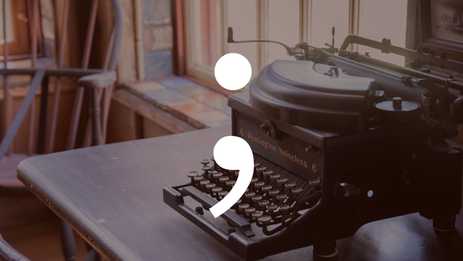Whether you’re a writer or an editor, it’s sometimes easy to get confused between omniscient and third person narration.
Omniscient narration, especially, is hard to identify because it’s hard to write – so if you’re dealing with a manuscript-in-progress, the author may not yet have nailed the narrative style.
It’s useful to get your head around the differences between these types of narration. Why? Because if you’re a writer, you want to make sure you’re handling your narration with expertise. And if you’re an editor, you want to be able to explain (or correct) slippages in narrative style.
The Layers of Narration
Before I lump you with descriptions of these types of narration, first consider this:
Narrators, not authors, tell stories.
The difference is subtle but important. If the author tells a story, the reader knows it’s made up. But if the narrator tells the story, it’s much easier for the reader to willingly suspend their disbelief and immerse themselves in what the narrator is saying.
Using a narrator helps the reader forget the author – and we want to forget the author because we don’t want to be reminded that what we’re reading isn’t real. Reading fiction is a lot more fun that way.
There are always three potential narrative layers to a piece of fiction: what the author writes, what the narrator says, and what the viewpoint character experiences. Sometimes the narrator and the viewpoint character are the same entity, but not always.
- The author writes about events they’ve made up.
- The narrator has witnessed (or is witnessing) something that actually happened (even though both the narrator and the events have been invented by the author).
- The viewpoint character is a perspective the narrator sometimes shares – it shows the reader the events of the novel through a particular character’s experience. A story can contain more than one viewpoint character.
Readers should only ever hear the voice of the narrator or the viewpoint character when reading a novel. It’s considered preachy and outdated for novels to have the author as its narrator, because in fiction we’re not interested in the author’s thoughts and opinions – we just want to experience the story.
Types of Narration
I’m not going to talk about first or second person narration here. But I’ll quickly explain the difference between the two types of third person narration and omniscient narration.
Third person objective narration
Third person objective is used when the point of view from which the story is told is like a floating camera following the characters around. There is no direct access to the thoughts and emotions of the characters, other than what can be interpreted by their dialogue and actions. This viewpoint isn’t normally used over the course of a whole novel because it keeps readers at arm’s length.
Third person subjective (or limited) narration
Unlike with third person objective, the reader has access to the thoughts and emotions of the viewpoint character. The story is told only through one viewpoint character’s perspective at a time; we see, hear, smell, taste, feel and think what they do. (If the narrative contains multiple viewpoint characters and the perspective shifts sporadically and jarringly, this is called ‘head hopping’.) A third person subjective narrative can be written in the character’s voice (to varying degrees, depending on the author’s style of writing), and the reader can know only what the character knows. A third person subjective point of view can be blended with third person objective to create variation.
Omniscient narration
The narrator knows everything, and isn’t limited to the viewpoint of any single character. An omniscient narrator could be a character in the story (like a god or an enlightened person), or they could be an observing nonentity. Completely omniscient viewpoints are difficult to pull off well because the narrator needs to have reasons for imparting the knowledge they choose to impart in the order they choose to do so, otherwise the story will feel contrived (e.g. the narrator knows who committed the murder – because they’re omniscient – but they’re not gonna tell you, the reader, until the end of the novel, just because).
Why It Gets Confusing
Omniscient vs third person subjective:
Because an omniscient narrator is all-knowing, it has access to every character’s thoughts and emotions. When it expresses these thoughts and emotions, the omniscient narrator can take on the voice and perspective of a character. Just because the author might decide to use this technique, it doesn’t mean the narrative is a blend of omniscience and third person subjective narration – it still all comes under the umbrella of an omniscient narration.
Omniscient vs third person objective:
Omniscient narration and third person objective narration have similarities, but the key is looking for when the narrator knows more than it could objectively observe. A narrative might seem as though it largely follows the rules of objective third person, but as soon as a deeper knowledge is revealed, we can be sure we’re dealing with an omniscient narrator – though this particular omniscient narrator is more observational than reflective.
Novels with Omniscient Narrators
A blend of objective and subjective third person narration is probably one of the most popular narrative techniques at this point in history, so you won’t be short of novels to read if you want to look at this type of narration. If you want to read more novels that use omniscient narration, though, I recommend:
- The Road by Cormac McCarthy – An excellent examples of a slightly disconnected omniscient narrator; you feel as though the narrator itself has been traumatised by the post-apocalyptic events.
- The Girl Who Circumnavigated Fairy Land in a Ship of Her Own Making by Catherynne M. Valente – A modern example of the author as omniscient narrator, to evoke traditional fairy tale storytelling technique.
- The Hitchhiker’s Guide to the Galaxy by Douglas Adams – A great example of an omniscient narrator with a personality.
The content of this post comes largely from my online course for professional editors: Developmental Editing: Fiction Theory.





